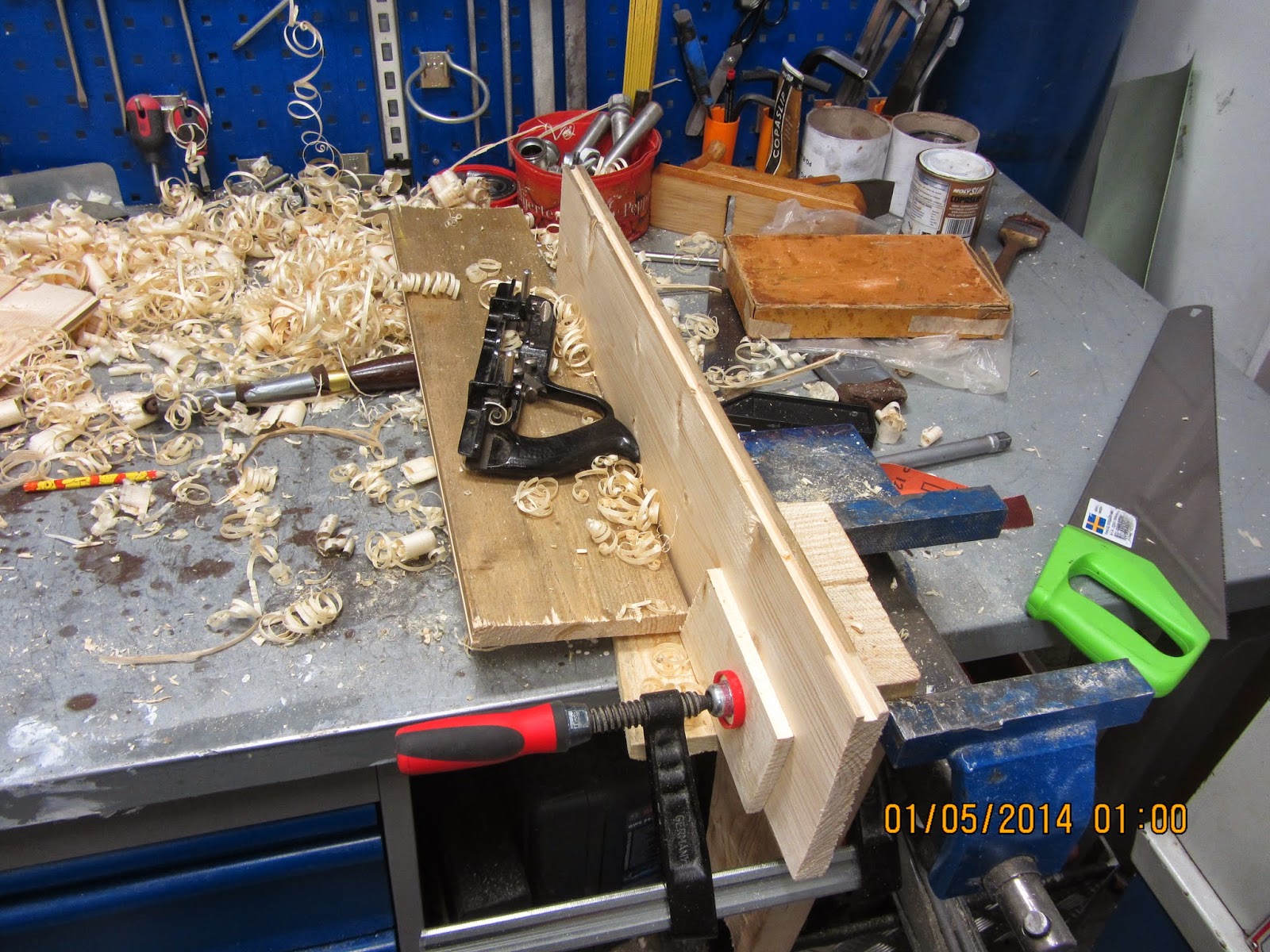For those pallet wood builds, the following approach is working fine for me:
First; I'll flatten the boards on one flat side, and maybe touch up the sides as well if they need it. The back is left coarse, and the boards don't necessarily have the same thickness.
Second; is making either a rabbet for ship lapping or a tongue and groove. On this chest I made 2 tongues on the centre board and one groove in each of the other boards.
I use my Stanley grooving plane for making tongues and grooves (and rabbets if needed). It is surprisingly effective, When you have only got one flat side, this side will be the reference side to all work done. This is possible as long as you remember to start with the widest setting on the tool, that way there will still be some wood for the fence to touch when you need to make the groove closest to the reference side of the board.
For this particular chest, I just had enough wood left over from the initial board (6m in length) to make a complete bottom. 3 pieces covered the width and I had an additional 1 cm on each side.
Making the bottom a bit too large and then sawing of the excess is an easy way to do it with canted sides.
Third; I attach the bottom to the chest. The bottom is mounted with the nice looking side (the reference side) on the inside of the chest. The rough side becomes the lower bottom of the chest.
I would prefer to use nails to stay a little classic, but we haven't got any on board, so I used some screws instead.
The wood is so soft that I didn't have any problems with setting the head of the screws about 1/8" below the surface. This low setting is crucial for the next step.
Fourth; with the bottom attached I use my scrub iron in the plane and level out the underside of the bottom. I usually work across the grain as it is easier to remove more material that way. Since the screws are set really deep in the wood, I can plane away without being afraid of nicking the iron.
Making a groove.
Bottom mounted.
Planing the bottom, note the cupping of the boards.












